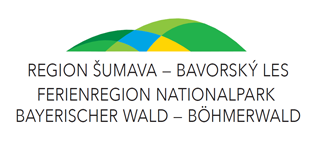9 – The Borderguards’ Path
There are two firing rooms inside the type A and B and only one inside the other types. The guns were put in the guncarriages suspended in loopholes for the purpose of better fire. The gap in the loophole could be smaller and there was much smaller probability that it would be hit by the enemy. These gaps could be covered or partly covered by the armoured plates as a piece of equipment. There was a tin panoramic map attached to the gun-carriage. Its special pointer showed the exact point in the terrain where the gun was aimed. This allowed the accurate fire in a zero visibility, for example through the smoke screen or at night.
The gas products being produced by firing were caught by a catcher and the pipes took them through the rearward wall outside the object. The periscope was intended for watching the surroundings. And there was a so called “grenade chute” /=the pipe embedded in concrete at the angle of 35° that could be shut from inside/ intended for the defence of its nearest surroundings.
The walls inside the object were panelled /with wood/. It muffled the sounds, worked as a thermal insulation, it was a good protection against the splintering of the concrete in case of hit, various equipment could be fastened to it.
The garrison of type A and B consisted of seven men. The commander and his deputy kept the situation under observation and they led the fire. Two men operated the M.G.s and two other men filled the magazines and operated the grenade chute and the loophole in the door. The operation of the ventilator and supply of the object were the task for a messenger.
Masking colours or the masking nets were used for the camouflage. The rearward wall was equipped with the hooks /called “pig tails”/for fastening a masking net.
The gas products being produced by firing were caught by a catcher and the pipes took them through the rearward wall outside the object. The periscope was intended for watching the surroundings. And there was a so called “grenade chute” /=the pipe embedded in concrete at the angle of 35° that could be shut from inside/ intended for the defence of its nearest surroundings.
The walls inside the object were panelled /with wood/. It muffled the sounds, worked as a thermal insulation, it was a good protection against the splintering of the concrete in case of hit, various equipment could be fastened to it.
The garrison of type A and B consisted of seven men. The commander and his deputy kept the situation under observation and they led the fire. Two men operated the M.G.s and two other men filled the magazines and operated the grenade chute and the loophole in the door. The operation of the ventilator and supply of the object were the task for a messenger.
Masking colours or the masking nets were used for the camouflage. The rearward wall was equipped with the hooks /called “pig tails”/for fastening a masking net.
